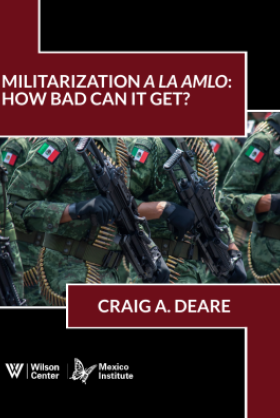Why Taking Hostages Is Such a Potent Tool in Warfare
Seizing captives, dating back to Julius Caesar in ancient times, has been a cost-effective tactic in conflicts well into the 21st century. Amid the human dramas, it forces swaps, payouts, and policy shifts, evident again in Israel’s deal with Hamas.

shutterstock.com/lev radin
Seizing hostages is one of the most enduring tactics in warfare. Recorded since ancient times, it has proven cost-effective in wringing political, military and economic concessions from adversaries well into the 21st century. As a youth in the fourth century B.C., the future King Philip II of Macedon was nabbed and held for three years in Thebes, a leading Greek city-state. In 75 B.C., Julius Caesar was taken hostage by Cilician pirates as he was sailing through the Aegean en route to study in Rhodes. He was held for 38 days and released only after a hefty ransom was paid.
In his fifth-century autobiography, the man later canonized as Saint Patrick, the Catholic patron of Ireland, wrote that he had been kidnapped, at the age of 16, by Irish marauders raiding the west coast of what was then the Roman Empire, or Great Britain today. He described working as a slave and claimed to have escaped six years later, although contemporary scholars have some questions about the account.
At the age of seven, the boy who later became King Henry II of France and his brother were swapped in 1526 for the freedom of their father, whom Spain had captured. They were held by Spain for four years. The author of “Don Quixote,” Miguel de Cervantes, was seized by Barbary Pirates in 1575. He was held as a slave in Algiers for five years until he was ransomed for 500 gold ducats. For centuries, hostages were given by governments as a human form of insurance so that treaties would not be broken because they eventually (although not always) wanted their people back.
American Hostage Dilemmas
Hostages have been part of American history from its early days. For years, Barbary pirates seized American merchant sailors plying the seas for trade with Europe. Under President George Washington, the United States paid a ransom of more than $642,500—about a quarter of the U.S. budget at the time— to the Dey of Algiers for freedom of more than a hundred American sailors held captive. The issue of ransom divided the Founding Fathers. Thomas Jefferson warned that demands for “tribute” would never end, while John Adams argued that financial concessions were a way to safeguard foreign trade for a young and financially strapped nation. The repeated crises with the North African pirates led to the creation of the U.S. Navy, while the phrase “to the shores of Tripoli” in the Marine hymn comes from the First Barbary War in 1805.
We have been captivated by the hostages’ captivity, sometimes personally.
Some of the most famous international crises over the past 75 years, since the end of World War II, have centered on hostages captured by extremist groups or revolutionary movements to pressure governments to change policies, pay ransoms, win the release of imprisoned allies, or generate global attention to their causes. Governments have, in turn, been tainted by their hostage policies. Publics who lived in countries, continents, or oceans away from the crises imagined the human trauma. We have been captivated by the hostages’ captivity, sometimes personally.
As a journalist, I covered the takeover of the U.S. Embassy in Tehran, when 52 American diplomats were held for 444 days. (Other Americans had been earlier released or snuck out of Iran, captured dramatically in the Oscar-winning film “Argo.”) in 1981, I stood at the foot of the plane in Algiers on a cold January night when the final 52 were flown to freedom. Their faces were ashen from 14 months without daylight. That hostage crisis cost Jimmy Carter the presidency.
I had colleagues and friends seized on the streets of Beirut by Hezbollah when I was based in Lebanon in the 1980s. Terry Anderson, who had an office next to mine, was chained to a radiator for seven years. After jogging on the track at the American University of Beirut, I often stopped for a drink with Tom Sutherland, the dean of agriculture, and his wife. He was kidnapped and held for six years. The hostages in Lebanon were the biggest pitfall for Ronald Reagan, who engaged in a disastrous arms-for-hostage swap with Iran to release a few Americans—only to have more taken.
In 2015, Matt Trevithick, my former research assistant at the Wilson Center, was picked up in Tehran, where he was taking an intensive Farsi language course. He was only freed after the implementation of the nuclear deal between Iran and the world’s six major powers in 2016. Four other Americans were separately released in a formal swap for Iranians imprisoned in the United States and repayment of funds dating back to undelivered military purchases by the shah too. Barack Obama is criticized to this day for the financial side of the deal. Last week, I bumped into Siamak Namazi, an Iranian-American and old friend who had been held for eight years in Tehran’s notorious Evin Prison. He was freed in another prisoner swap a few weeks ago, the financial terms of which sparked criticism for Joe Biden.
Modern Hostage Dynamics
American hostages have been seized in many countries, most recently in Russia, China, Afghanistan, Venezuela, Syria – and this month by Hamas. Governments have also arrested and charged residents or visiting foreigners on minor or, more often, false charges. They are effectively hostages or political prisoners.
The tactic of taking hostages has, too often, worked, even though global institutions have repeatedly condemned it.
The tactic of taking hostages has, too often, worked, even though global institutions have repeatedly condemned it. In 1949, the Geneva Convention called hostage-taking a “grave breach” of international law. In 1950, the International Law Commission, established by the United Nations, called the killing of hostages a “war crime.” And the International Convention Against the Taking of Hostages was adopted by the U.N. General Assembly in 1979. To little avail. They have few means of enforcement beyond sanctions that can take decades to have much impact. Meanwhile, the plaintive plight of captives has swayed governments to deal for their lives. To win the release in 2022 of Brittney Griner, the American basketball player, the United States released Viktor Bout, a notorious arms dealer nicknamed the “Merchant of Death.” In 2012, Bout had been sentenced to 25 years in prison for conspiring to kill Americans, delivering anti-aircraft missiles, and providing aid to a terrorist group.
Hostage-taking has played out disproportionately—and infamously—in the Middle East over the past half-century. In 1972, Black September – a militant wing of the Palestinian Liberation Organization—stormed the quarters of the Israeli Olympic team in Munich. It demanded the release of more than 230 prisoners held by Israel. All nine Israelis taken hostage were killed during the attack and Germany’s failed rescue attempt. The three surviving Palestinian perpetrators arrested by Germany were freed weeks later in a hostage swap following the hijacking of Lufthansa flight 615 by Black September sympathizers. The cycle, too, is often perpetuated.
In 1976, Israeli commandos launched a daring raid to free more than 100 Israelis taken hostage on an Air France flight from Israel to France. It was hijacked by members of the radical Popular Front for the Liberation of Palestine and rerouted to Entebbe, Uganda. The hostages were eventually freed, but one of the leaders of the military operation—Col. Jonathon Netanyahu—was killed, reportedly, as he led the hostages to an awaiting Israeli aircraft. His brother is now Israel’s prime minister, the man in charge of the government when Hamas launched the largest hostage crisis in the country’s history. But rescue efforts are complicated, as Israel has discovered in its military operations in Gaza. In 1980, Operation Eagle Claw to rescue the American diplomats held in Tehran failed disastrously. At a transit point in a remote Iranian area, code-named Desert One, two U.S. military aircraft collided, killing eight American forces. The operation was aborted.
There have been way too many others. In the 1980s, Hezbollah took dozens of Westerners hostage in Lebanon—some held for years--to demand freedom for its members convicted and imprisoned in Kuwait for bombing the U.S. and French embassies. In 1991, Iraqi President Saddam Hussein held foreigners as human shields—or “foreign guests,” as he called them--after invading Kuwait as a way to discourage a U.S.-led invasion. (It didn’t.) Hamas has seized Israelis for almost two decades. Ghalid Shalit was captured in 2006 in an earlier attack across the border by the Palestinian extremist movement. He was held for five years and only freed after Israel agreed to trade more than 1,000 Palestinian prisoners. Among the Palestinians released was Yahya Sinwar, a Hamas leader who spent 22 years in an Israeli prison and is now widely considered an architect of the Oct. 7 attacks. He is also now a key player in the world’s latest hostage crisis swap that will determine the fate of more than 200 people abducted that day.
More than two millennia ago, Julius Caesar got his revenge. After his release, he led a force back to the island where he had been held and seized the Cilician pirates, who were imprisoned and later killed. Yet piracy has remained a practice into the 21st century—and seizing hostages even more so.
The views expressed in these articles are those of the author and do not reflect an official position of the Wilson Center.
About the Author


Middle East Program
The Wilson Center’s Middle East Program serves as a crucial resource for the policymaking community and beyond, providing analyses and research that helps inform US foreign policymaking, stimulates public debate, and expands knowledge about issues in the wider Middle East and North Africa (MENA) region. Read more













